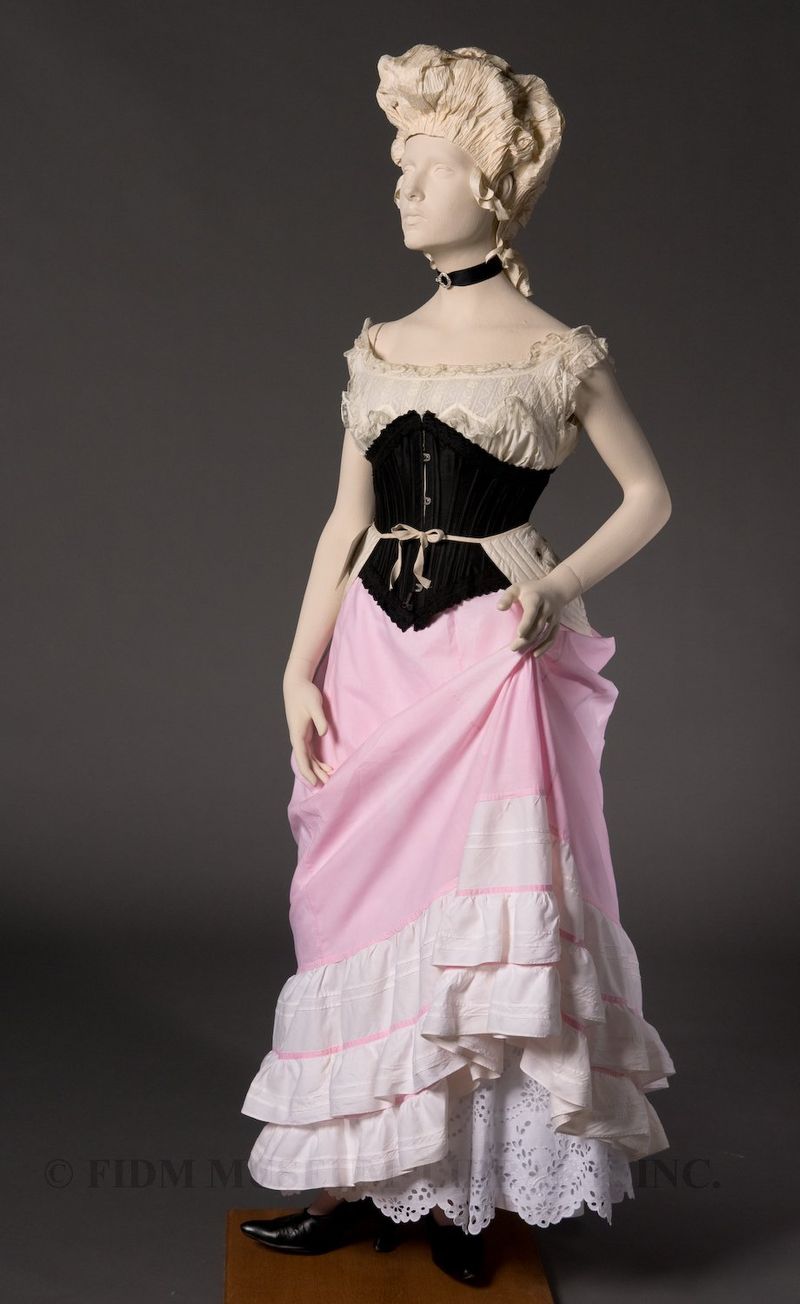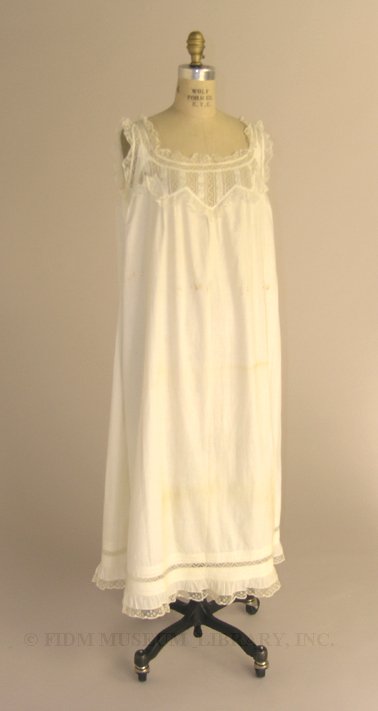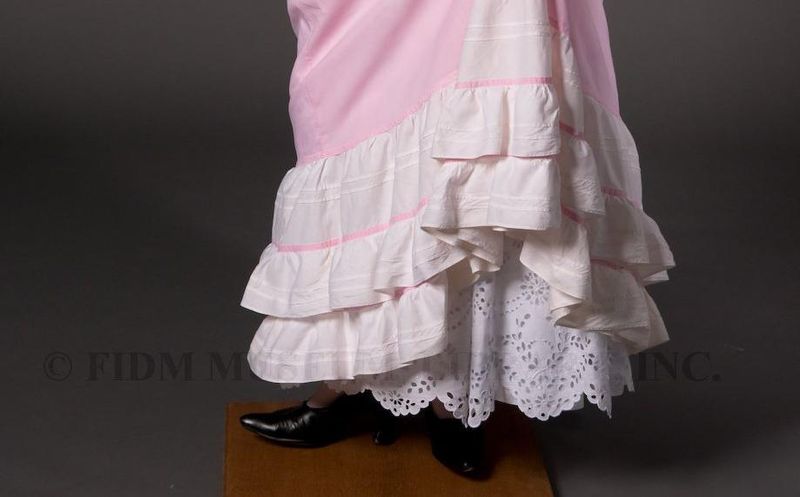For much of the past 500 years, women have used underpinnings to mold their bodies into the dominant fashionable silhouette. The basic underpinnings usually consisted of a chemise, corset and petticoat(s). Other items, including sleeve plumpers, crinolines and bustles, came and went as fashion dictated. In the late 19th century, the fashionable figure was womanly and voluptuous, with full curves and a defined waist. This undergarment ensemble features some of the underpinnings a woman might have used to create this silhouette.
For Victorian women, cultivating personal beauty was a worthy pastime and a moral imperative. Though facial beauty was purely accidental, “deficiencies” of the body could be improved upon through careful application of the appropriate undergarments. Shaping undergarments not only corrected any perceived physical flaws, but also concealed signs of aging. Corsets were considered particularly important, as only an “immoral” woman would go about un-corseted. Though dress reformers decried the physical and moral implications of the corset, most women continued to wear them until the early 20th century.
Closest to the body was the chemise. Usually a sleeveless garment of linen or fine cotton lawn, the shape and fit of the chemise was much like a modern day nightgown. Worn next to the body, the washable chemise kept stains and odors from the less washable corset and gown. By the late 19th century, some women had begun to wear bifurcated drawers with a shorter chemise. Below is an image of the chemise seen in the ensemble above.
c. 1890
Gift of Ann Jensvold
2003.793.8
2003.793.8 Bodice detail
Despite the fact that underpinnings were seen by very few people, a great deal of attention was paid to quality and appearance. The upper portion of the chemise was usually trimmed with delicate lace or ruffles. In 1900, Harper’s Bazaar suggested “that if your lingerie is made to the latest fashions, it is possible to get along with fewer gowns.”1 This same article noted a renewed interest in hand-worked chemise trimmings.
Petticoats and corsets were worn over the chemise. In the late 19th century, petticoats fit closely at the hips and flared gently at the hem. To fully support the skirts, two petticoats were usually worn. The bottom petticoat was typically plain white and was sometimes called an underskirt. Because the top petticoat was occasionally glimpsed by others, it was often more decorative, such as the pink seen here. You can also glimpse the eyelet embroidery which decorates the hem of the underskirt.
Pink petticoat
c. 1895-1900
Gift of Anonymous Donor
2007.40.13
Though early 19th century corsets tended to be made from plain white cotton or linen, by the late 19th century, colorful models were available. This cotton sateen version has center front fasteners, which meant that it could be undone without the help of a maid or body servant. Cut below the bust, it creates the shaped waist that was so desirable during this period. The image below shows the back laces, which could be tightened or loosened depending on body type. Fit was important, as “gowns of the present day [1900] require to be worn over most carefully fitted corsets and petticoats.”2
c. 1900
Gift of Anonymous Donor
2003.40.40
To emphasize or create a womanly figure, women could wear hip pads, sometimes called hip bustles. This particular hip pad is labeled “The Scott” and is made of cotton lightly padded with horsehair. According to its still attached(!) label, The Scott was “especially adapted for very slight figures having no side or back hips.” This slight augmentation of a slender figure would help skirts “hang and drape gracefully.”
 The Scott hip pad
The Scott hip pad
c. 1900
Museum Purchase
2004.5.9
1 “The Newest Summer Lingerie.” Harper’s Bazaar 25 Aug. 1900: 1065.
2 Ibid.








What a tremendous find in that set of hip pads! I have a book from the early 1900’s intended for young homemakers with a large section on draping, patterning and sewing clothes for women and girls but not one word on the how tos of corsets and bustles. This must be why: they were expected to be bought.
In general, I think that women did expect to purchase corsets, bustles and the like. Given their construction and the very specific materials necessary to create the shaping, it wouldn’t have been practical to make these on a small scale. Another interesting aspect of this is that most corsets were made by men, as the boning (usually whalebone) was very stiff and could only be manipulated with great strength.
Wonder what the grommets in the hip pads were for.
Hi Scott,
According to our curator, the grommets were for air circulation (think of the mesh “summer” corsets), weight to keep in place, and to hold the inner padding. Hope this helps!